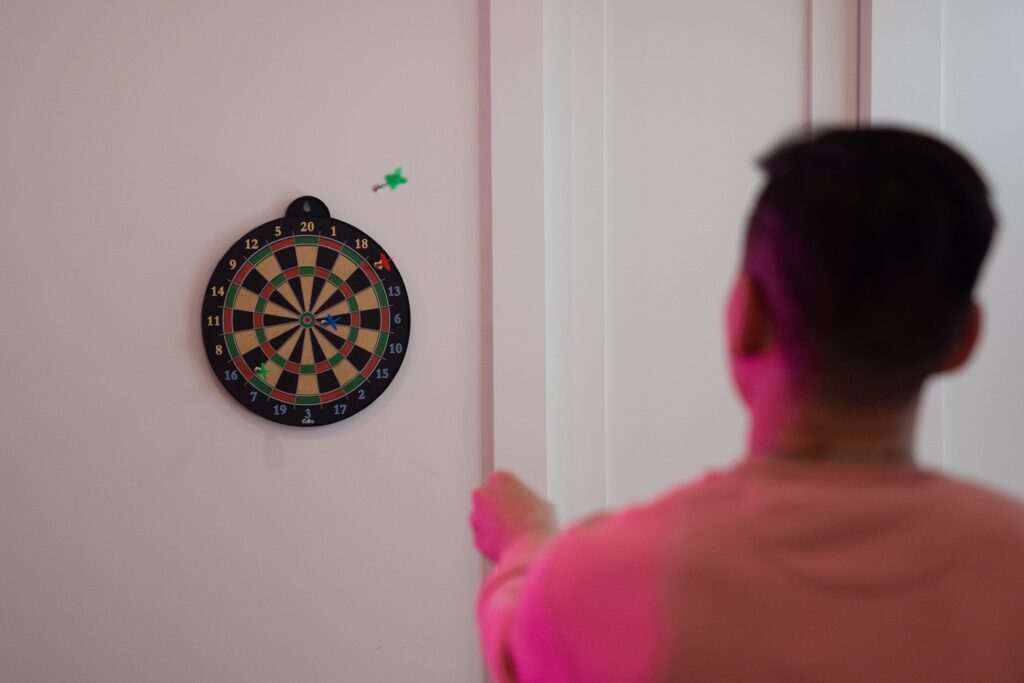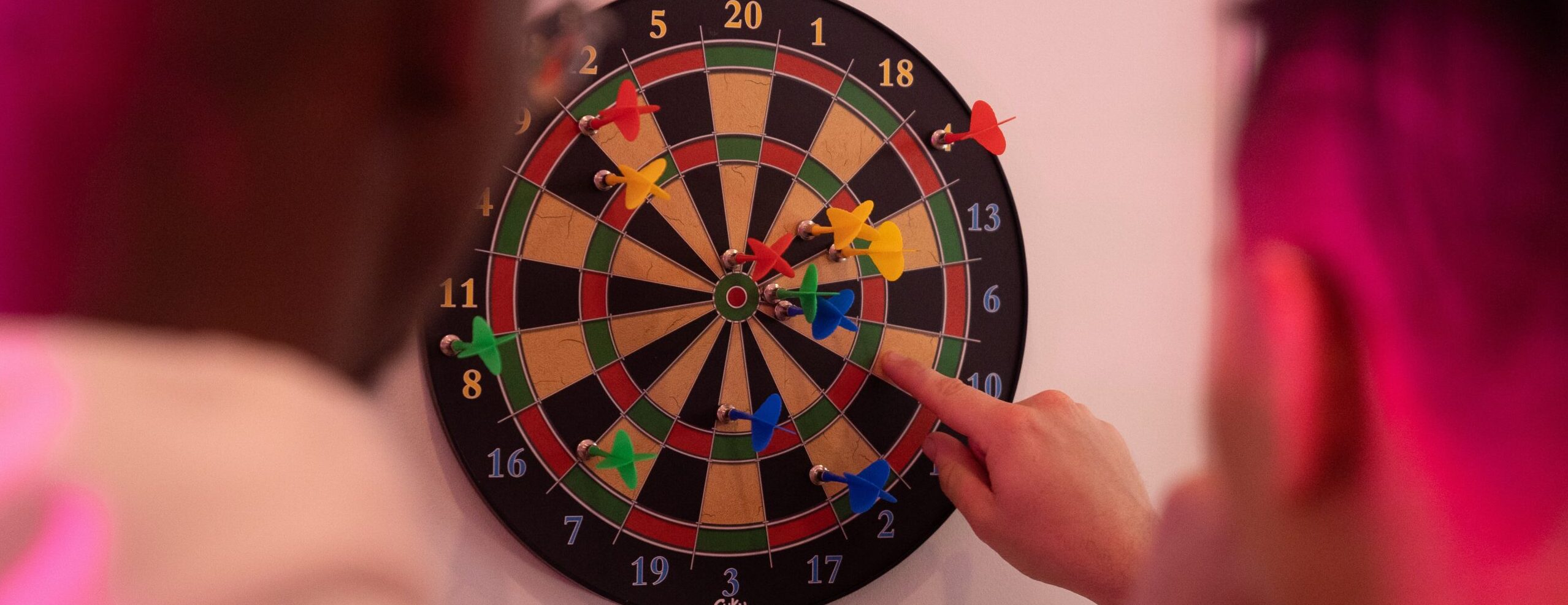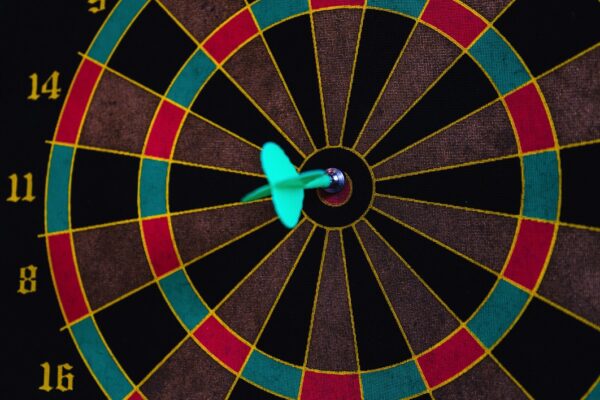Darts is a popular game that has been played for centuries. It involves throwing darts at a circular board, known as a dartboard, to score points. The game of darts has its roots in the Middle Ages when soldiers would throw arrows at the bottom of a wine barrel. Over time, this game evolved into the modern version we know today. One important aspect of the game of darts is the distance between the player and the dartboard. In this article, we will explore the history of dartboard distance.
The earliest records of darts being played as a game date back to the late 19th century in England. At this time, the standard distance for the dartboard was 8 feet. The game was played with wooden darts that were sharpened at one end and weighted at the other. The dartboard was made of elm wood, and the segments were marked by staples or nails. The scoring system was also different than what we know today. The center of the board was worth 5 points, and the outer ring was worth 1 point.

As the game of darts grew in popularity, so did the need for standardized rules and regulations. In 1908, the National Darts Association (NDA) was formed in England. This organization was responsible for setting the rules and regulations for the game of darts, including the distance between the player and the dartboard.
In 1927, the NDA changed the standard distance from 8 feet to 7 feet 9 ¼ inches. This change was made to make the game more challenging and to encourage players to use a throwing technique known as the “arc throw”. The arc throw involves throwing the dart in an arc-like motion, rather than a straight line. This technique required more skill and accuracy, making the game more challenging and competitive.
In 1977, the British Darts Organisation (BDO) was formed. This organization became the governing body for the sport of darts in the United Kingdom and was responsible for setting the rules and regulations for the game. The BDO standardized the distance between the player and the dartboard at 7 feet 9 ¼ inches. This distance has remained the standard for the game of darts ever since.
In the United States, the game of darts did not become popular until the 1970s. At this time, the American Darts Organization (ADO) was formed. This organization was responsible for setting the rules and regulations for the game of darts in the United States. The ADO standardized the distance between the player and the dartboard at 7 feet 9 ¼ inches, which was the same distance used by the BDO.
Today, the standard distance for the game of darts is 7 feet 9 ¼ inches. This distance is measured from the front of the dartboard to the oche, which is a line that the player must stand behind when throwing the dart. The oche is usually marked with tape or a painted line.
In addition to the standard distance, there are also variations of the game of darts that use different distances. For example, the game of American darts, which is popular in the United States, uses a distance of 8 feet. This variation also uses a different scoring system, with the outer ring being worth 2 points and the center of the board being worth 50 points.
In conclusion, the history of dartboard distance is an important part of the evolution of the game of darts. From the early days of the game in the Middle Ages to the standardized distance used today, the distance between the player and the dartboard has played a significant role in the game’s development. As the game continues to grow in popularity, it will be interesting to see if variations of the game emerge, and if the distance between the player and the dartboard changes.
One factor that may impact the standard distance is the size of the dartboard itself. While the standard size of a dartboard is 18 inches in diameter, there are larger and smaller boards available. If a larger board is used, it may be necessary to increase the distance between the player and the board to maintain the proper level of challenge and skill.
Another factor that may impact the standard distance is the development of new throwing techniques or equipment. As players continue to refine their techniques and new equipment is developed, the standard distance may need to be adjusted to maintain a fair and competitive playing field.
Despite these potential factors, it seems likely that the standard distance for the game of darts will remain at 7 feet 9 ¼ inches for the foreseeable future. This distance has been in place for nearly a century and has become ingrained in the culture of the game. Changing the distance would likely be met with resistance from players and fans alike.
In addition to the standard distance, there are also other regulations that must be followed when playing the game of darts. For example, the height of the dartboard must be 5 feet 8 inches from the floor to the center of the board. The board must also be hung so that the center of the board is directly above the center of the oche.
The type of darts used in the game is also regulated. The weight of the dart must be between 12 and 50 grams, and the length of the dart must not exceed 30.5 centimeters. The dart must also have a steel tip, and the barrel of the dart must not exceed 8 millimeters in diameter.

In conclusion, the history of dartboard distance is an important part of the game of darts. From its origins in the Middle Ages to the standardized distance used today, the distance between the player and the dartboard has played a crucial role in the evolution of the game. While there may be variations of the game that use different distances, it is likely that the standard distance will remain at 7 feet 9 ¼ inches for the foreseeable future. As the game of darts continues to grow in popularity, it will be interesting to see how it evolves and adapts to new technologies and techniques.



